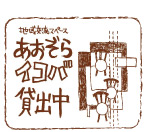Experience in Organizing Pollution Victims
by Mitsuko Matsu
Chairperson Amagasaki Association for Pollution Patients and Their Families
Introduction
Let me begin by saying that I’m an air pollution victim from Amagasaki City in Hyogo Prefecture, Japan. Amagasaki is one of the places hit by the Kobe earthquake on January 17, 1995.
I was about the years 1953 to 1955 that air pollution began to worsen in Amagasaki. Behind this was Japan’s loss in the Second World War, in which industrial cities had been reduced to ruins in air raids, and big cities had been razed by fire, because of which the government produced a string of ideas for postwar reconstruction, including rapid growth, doubling people’s incomes, and remaking the Japanese archipelago, in order to raise the enthusiasm of the citizens, who were enervated after the war. The government tried everything, and from the late 1940s to about 1975 its policy of nation-building and putting industry above all, as well as production activities aimed at ranking Japan equally in international society, caused severe air pollution.
In the latter half of the 1950s you couldn’t see 30 meters ahead. Even during the day motor vehicles had to use their headlights, and traffic ran slowly. There was nothing to be seen of nature, and with the sky always being a leaden gray, one couldn’t see birds, insects, or plant life anywhere. In the industrial zone at that time, there were many people who had coughs and phlegm, and who just couldn’t get over colds.
People with symptoms like these appeared also in Amagasaki, especially in the south industrial zone. But the local citizens didn’t notice that these symptoms were caused by the smoke emitted from the factories.
People who moved to Amagasaki from other cities around 1954 and 1955 said “The air is dirty,” and “The air stinks.” Some of those people, mainly school teachers, began taking pollution readings on the air in the area. It was about that time when a large number of children started showing symptoms of asthma.
Taking air pollution readings began with people living in one area, but people who’d been living there a long time thought that it was only normal for Amagasaki to be this way. Still, through persistent persuasion and action, as well as calling on all sorts of people to get involved, citizens managed to make the local government take action.
And then in November 1970 Amagasaki City enacted an ordinance called the “Pollution Medical Care Compensation Program,” and in December the city was designated as a type 1 area (primary) under the national Law on Special Measures. In June 1971 the Amagasaki Association for Pollution Patients and Their Families was started. The association mainly comprised the government-designated pollution patients, the school teachers who showed local citizens how dirty Amagasaki’s air is, and Mr. Kato, a local high school teacher. However, we didn’t know at all where the certified patients were living, or how and what to tell them, and we didn’t know how to publicize our cause. We’d gone to the trouble of setting up our organization, but we had only a few members, so our first order of business was to search out patients and increase our membership. We worked hard at finding members by getting hospitals and clinics to post notices at their reception desks, putting newsletters and flyers in neighborhood mailboxes, and other activities. Another means involved sitting in clinic waiting rooms all day and waiting for pollution patients to appear. We would ask their addresses, and on subsequent days send several members to visit and explain our association, then have those patients join.
In those days there was little knowledge of pollution, so even when we found a patient’s home we would be mistaken for insurance or newspaper salespersons, so people would throw water on us to chase us away, saying, “We have nothing to do with pollution here!” Some people avoided us like the plague, and we had difficulty in being understood even among our own families. Little by little we worked with patients in keeping at the arduous toil of building up our association, while lacking family understanding about our illnesses, and with feelings of hate for this social evil.
Still, while finding a small measure of redress for the victims, Amagasaki’s air didn’t improve, and the number of victims increased rapidly. We broadened our citizens’ movement and involved the local government in our fight to eliminate the major source of pollution, which was Kansai Electric’s old plants. Finally in November 1973 we forced Kansai Electric to close its Amagasaki 1 and 2 plants.
That same year the “Ordinance on Compensation for Amagasaki City’s Certified Pollution Patients” was created, and the city’s polluting companies were required to provide a fund of 740 million, and to use it to build a health facility for the patients in a place with clean air. On countless occasions we had petitioned administrators and the City Council for this corporate fund, and in addition to making everyone including the local government take action, we had been able to protect the civil rights of Amagasaki pollution victims. In addition to the health facility, we were also successful in getting a facility for the health recovery of victims (a heated pool for children).
September 1974 saw enactment of the Pollution-Related Health Damage Compensation Law, the first of its kind in the world.







